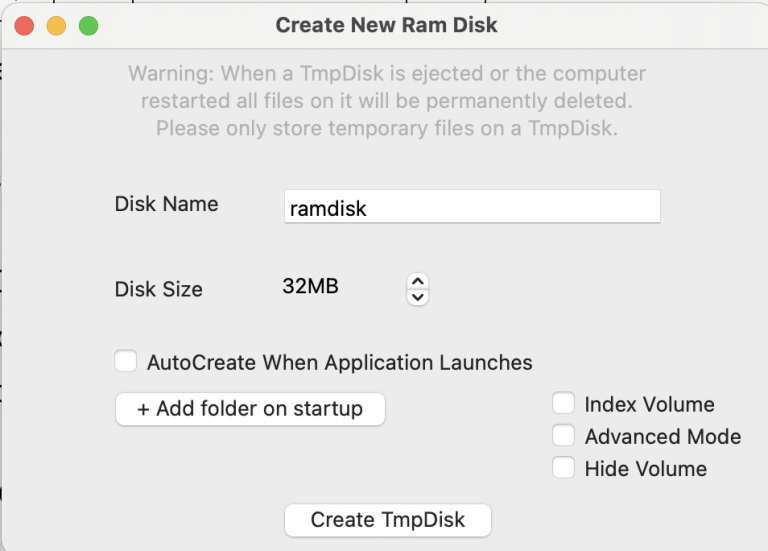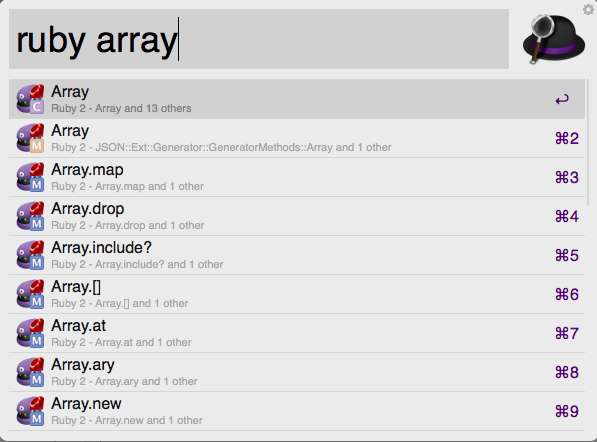
Update: This article originally swapped base 2 and 10 units when referring to storage measurements.
#Tmpdisk mac mac
Mac 911 cannot reply to email with troubleshooting advice nor can we publish answers to every question. We’re always looking for problems to solve! Email yours to including screen captures as appropriate. Restarting clears the cache and regains that storage space, though the same problem can recur over time. If all the numbers agree, it could be temporary caches, which in previous releases of OS X before El Capitan, I’ve sometimes seen grow to 30GB to 50GB on one of my Macs. (Gem::FilePermissionError) You don't have write permissions for the /usr/bin directory. I then enter my password, and everything works fine until this pops up, 'ERROR: While executing gem.
#Tmpdisk mac install
Removing the startup drive from Spotlight indexing can reset a wonky problem with the display of remaining storage on that drive. I'm on Mac and I'm trying to install Sass using the command in terminal, 'sudo gem install sass'.

If these don’t agree, it’s likely a Spotlight error. The command-line df program tells you what the low-level system thinks about storage usage on mounted drives. (The Gi or Ti refers to gibibytes and tebibytes, base 2 units for a billion and trillion bytes instead of the base 10 gigabytes and terabytes.) It installs as a menu bar item and includes the ability to create RAM disks automatically at startup.

It allows you to create RAM disks by simply filling in a few fields. Via Terminal, type df -h and you’ll get a human-readable summary by volume in columns marked Used, Avail, and Capacity (as a percentage). TmpDisk: Available at /imothee/tmpdisk, TmpDisk is a simple Open Source RAM disk management app. The bottom of every Finder window with the status bar enabled ( View > Show Status Bar) shows remaining storage on the volume that the window represents, too. The General area shows data used and remaining. In the Finder, select a volume then choose File > Get Info (Command-I). Select > About This Mac, and the Storage tab reveals all attached drives, along with breakdowns by coarse file type for bootable (“blessed”) volumes. OS X reports remaining storage in multiple ways: The About This Mac window reveals space use on drives in a graphical display.


 0 kommentar(er)
0 kommentar(er)
